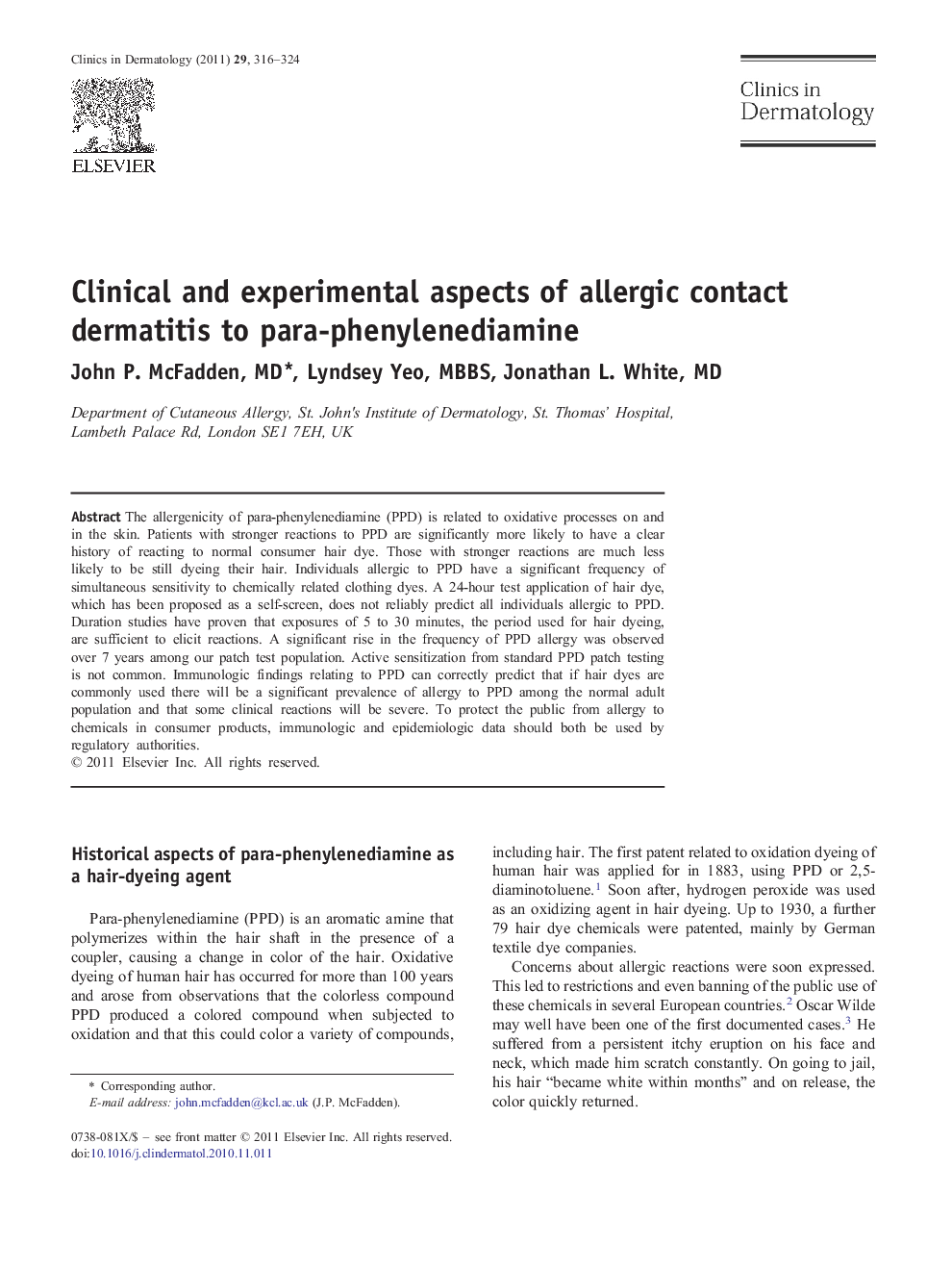| Article ID | Journal | Published Year | Pages | File Type |
|---|---|---|---|---|
| 3194425 | Clinics in Dermatology | 2011 | 9 Pages |
The allergenicity of para-phenylenediamine (PPD) is related to oxidative processes on and in the skin. Patients with stronger reactions to PPD are significantly more likely to have a clear history of reacting to normal consumer hair dye. Those with stronger reactions are much less likely to be still dyeing their hair. Individuals allergic to PPD have a significant frequency of simultaneous sensitivity to chemically related clothing dyes. A 24-hour test application of hair dye, which has been proposed as a self-screen, does not reliably predict all individuals allergic to PPD. Duration studies have proven that exposures of 5 to 30 minutes, the period used for hair dyeing, are sufficient to elicit reactions. A significant rise in the frequency of PPD allergy was observed over 7 years among our patch test population. Active sensitization from standard PPD patch testing is not common. Immunologic findings relating to PPD can correctly predict that if hair dyes are commonly used there will be a significant prevalence of allergy to PPD among the normal adult population and that some clinical reactions will be severe. To protect the public from allergy to chemicals in consumer products, immunologic and epidemiologic data should both be used by regulatory authorities.
